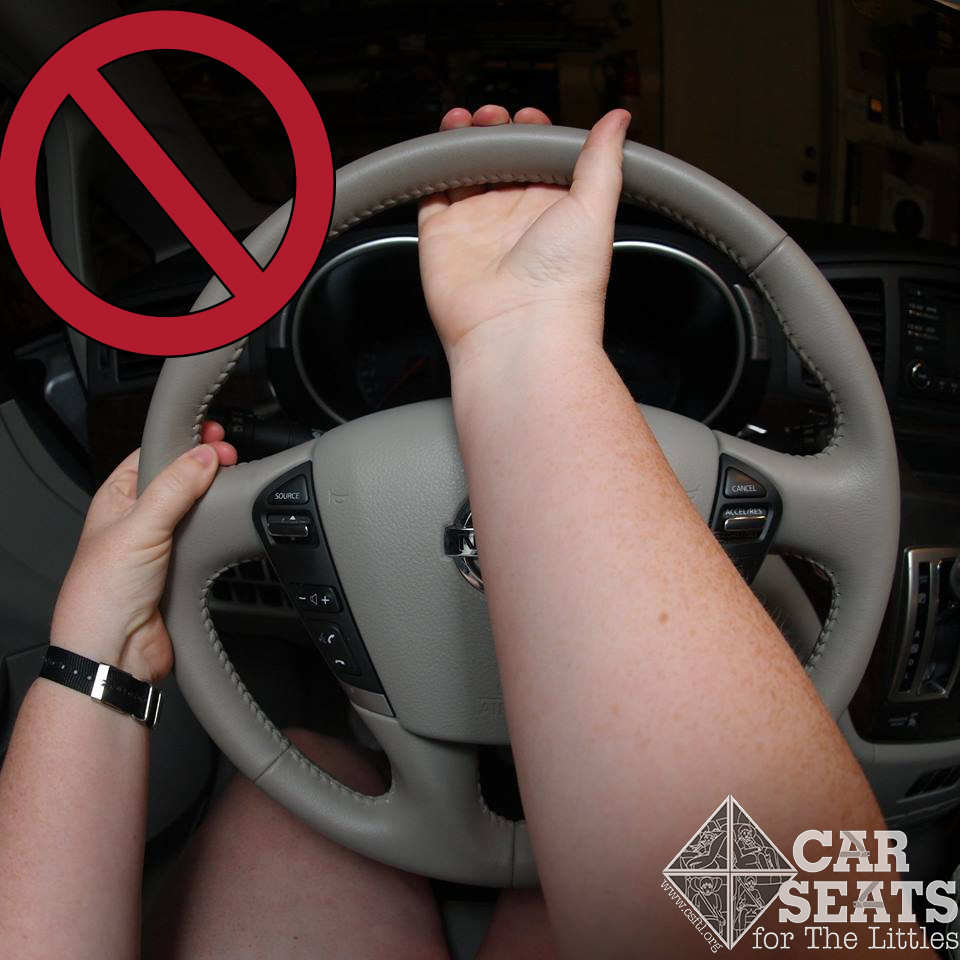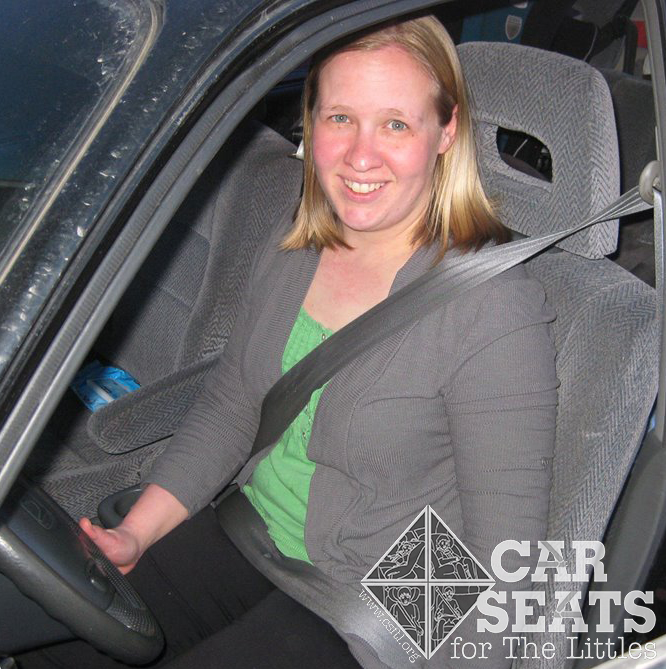Driver safety and safety features in vehicles are evolving as fast as technology allows. Many of the things we learned during drivers’ education are now absolutely wrong, thanks to advances in occupant protection. There have also been advances to occupant protection that have nothing to do with what I learned in driver’s education but are very important to remember when driving and transporting children and other passengers.
Hand Position
For decades, the standard for hand position on the steering wheel was to put your hands in the 10 and 2 position, if you were imagining the steering wheel as a clock. However, because of the addition of airbags, this practice has been come obsolete and unsafe. With your hands in that position, should the airbag deploy, you are looking at some major damage to your hands and arms.
Instead, the NHSTA and AAA suggest holding the wheel at the 9 and 3 position. There is some conflicting opinions on going lower than the 9 and 3 position to the 8 and 4 position. Some say it provides you with greater hand protection, while others say that it gives you less control over the wheel, increasing the likelihood of an accident.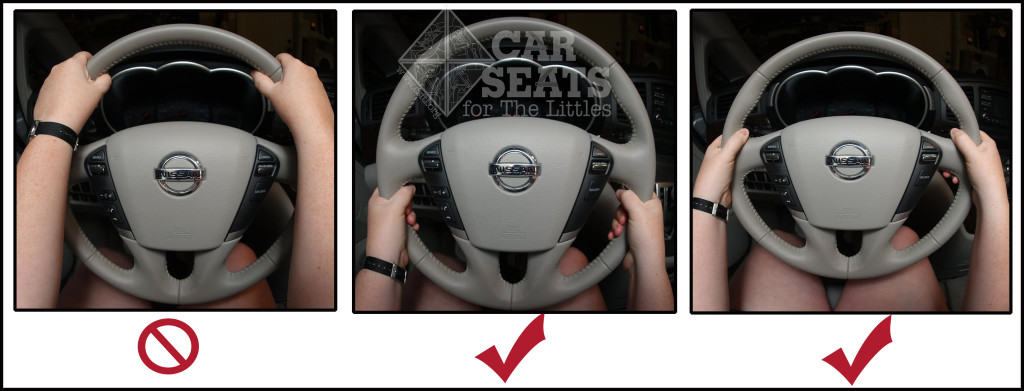
It turns out, the way that we learned to turn back in the “good ole days” is now also a no go. The “hand over hand” method also puts your hands in direct fire of an exploding airbag. Instead, the experts recommend using a push/pull method. Instead of switching your hands over top of one another, they recommend pushing up with one hand and pulling down with the other.
Body Position
The driver and passenger need to be positioned so that the middle of their breastbone is at least 10 inches away from the airbags. A good visual for this is to picture the length of your forearm, from your wrist to your elbow. For the driver, if the vehicle is equipped with an adjustable steering wheel, try to position it towards the chest, and not the face. In order to maintain a proper belt fit, the seat for both the passenger and the driver should be in an upright position; your feet should easily be firmly planted on the floor.
Other Vehicle Safety Features
 New vehicles are now equipped with backup cameras and backup sensors. These fantastic features enhance what you are able to see around you.
New vehicles are now equipped with backup cameras and backup sensors. These fantastic features enhance what you are able to see around you.
However, they are not a total substitute for doing a walk around the vehicle before entering and using mirrors to check your surroundings. Walking completely around before entering the vehicle ensures that there are no objects or children hiding in blind spots that may be missed by mirrors or backup cameras.
A large number of vehicles now offer a variety of airbags, including side curtain airbags, knee airbags, and torso airbags. Some cars even come equipped with a front center airbag that deploys between the driver and the passenger. These are all designed to reduce impact onto a hard surface. Please remember to NEVER place a rear facing car seat in front of a frontal air bag. The force at which these airbags deploy is deadly to a child sitting in a rear facing car seat.
Torso airbags are built into the front seats not into the side of the vehicle, or into the dashboard or steering wheel. One mistake I happen to see frequently in the field is people putting non-regulated seat covers onto the seats in cars that are equipped with this type of airbag. What is the issue with this? The cover is masking the airbag, so in an accident, the airbag won’t deploy properly leaving you without the benefit of this safety feature.
Emergency Preparedness
Are you prepared for an emergency? Storms, breakdowns, zombies? It’s always good to be prepared and ready just in case and keeping an emergency kit in your vehicle so you can easily handle problems when out on the road. I’ve got my zombie stash put together, so I feel pretty well prepared… just in case.

Here’s a list of what I’ve got in my emergency zombie kit:
- lots of bottled water
- two refillable fold-up bottles, similar to these
- a blanket, just one in the Spring, but enough for the family in the Winter
- flash light with extra batteries
- first aid kit
- small kit with glow sticks, duct tape, and small length of rope
- an emergency credit card and a little cash
- emergency triangle signs (like these) and jumper cables
- trash bags and an extra ziplock bag
- multi-tool and a vehicle belt cutter/window breaker – though mine is a little different from the one in the link.
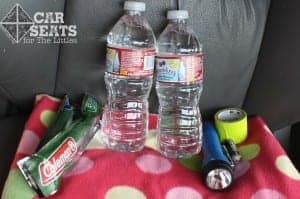
Glow sticks are not just fun for your Littles (they can be a great distraction in case you’re stuck somewhere) but they’re also an important part of your emergency kit. Duct tape can probably fix almost anything, so I like to have it handy.
First Aid Kits
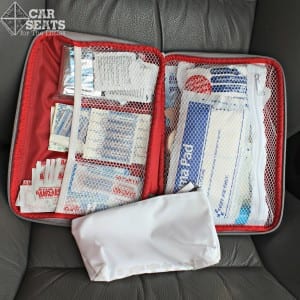
Buying a ready-made first aid kit can save some time and energy, but putting one together on your own is also fine. Consider including items like an ice pack, tweezers, and a small pair of scissors. Cool bandages are also necessary, as most Littles know that a cool bandage definitely works better for boo-boos than a plain one does. Also consider adding basic medications such as Tylenol, ibuprofen and Benadryl. These can be handy in case of a surprise fever or unknown allergic reaction.
Secure Those Projectiles!
Even during the zombie apocalypse, making an effort to stow potential projectiles is an important thing to consider: often using a bin or storage item and putting that in a cargo area can effectively coral your emergency supplies. Depending on the design of your vehicle, you may need to use the vehicle’s cargo net or a ratcheting cargo strap, which can be found in the truck cargo/storage section of auto supply stores, to help secure your emergency kit.
Extra Stuff
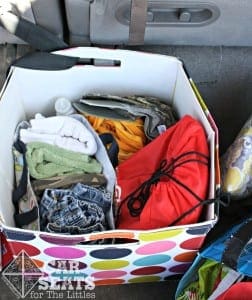 This bin I keep in my trunk for every day emergencies with children. Inside are several items we might need in our adventures: extra hats, a towel and change of clothes for the inevitable messes and mishaps, and a “busy bag” with coloring books and small toys.
This bin I keep in my trunk for every day emergencies with children. Inside are several items we might need in our adventures: extra hats, a towel and change of clothes for the inevitable messes and mishaps, and a “busy bag” with coloring books and small toys.
When considering what to do during natural disaster, walking dead invasion, a road trip, or just every day situations, remember to plan to have essentials at hand. Even if we never experience an epic breakdown of society because of zombies, having an emergency kit in your vehicle can provide peace of mind. The list I’ve given above may be a good starting point for your kit, but always consider the season and climate, as well as your family’s specific needs. There are some more helpful suggestions for preparing for things like natural disasters at FEMA’s ready.gov website.
Being safe in the vehicle is not just for the Littles, its important for everyone to buckle up and follow best practice on the road.
Originally written by Emma Douglas. Edits maintained by CSFTL.

